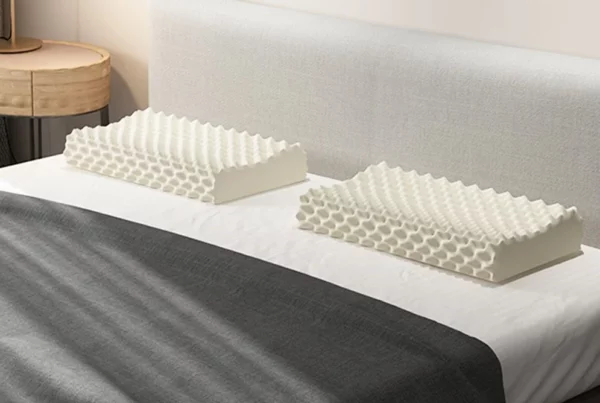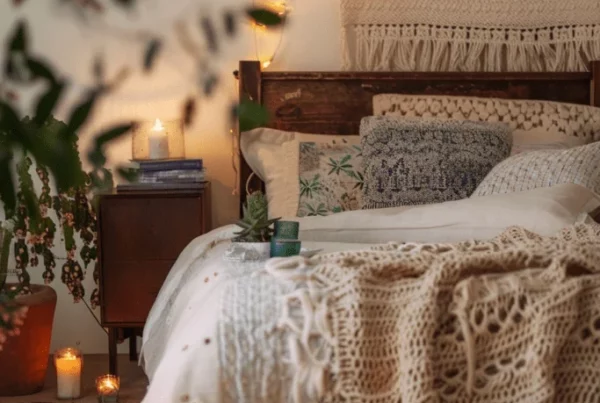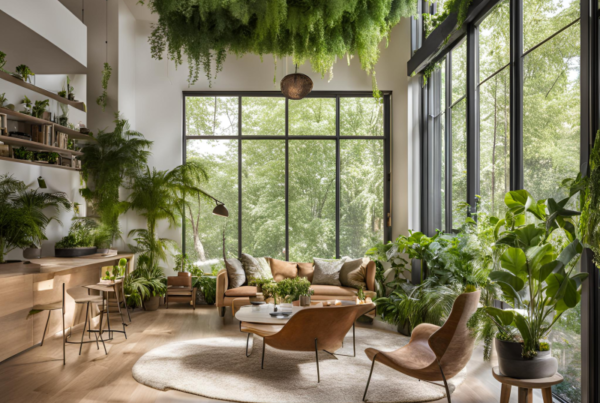
Imagine entering a space that feels like a natural extension of the outdoors. Sunlight streams through strategically placed windows, illuminating a room adorned with calming earth tones and organic textures. Plants seem to thrive in every corner, purifying the air and adding a touch of life. This isn’t just a dream; it’s the essence of biophilic design.
Biophilia, meaning “love of life” in Greek, is the innate human connection with nature. Biophilic design incorporates elements of the natural world into interior spaces, fostering a sense of well-being, creativity, and overall happiness. In today’s fast-paced world, creating a haven of nature-inspired calm within our homes has become more important than ever. Let’s delve into the fascinating world of biophilic design and explore how to integrate its principles into your own space.
Table of Contents
The Benefits of Biophilic Design
Biophilic design isn’t just about aesthetics; it offers a multitude of benefits that extend far beyond visual appeal. Studies have shown that incorporating nature into our surroundings can:
- Reduce stress and improve mood: Natural elements have a calming effect, lowering cortisol levels and promoting feelings of relaxation.
- Boost creativity and focus: Biophilic spaces can enhance cognitive function and concentration, making them ideal for work or study areas.
- Improve air quality: Plants act as natural air purifiers, removing toxins and pollutants from the indoor environment.
- Increase feelings of well-being: Biophilic design fosters a sense of connection to nature, which can contribute to overall happiness and life satisfaction.
Bringing the Outdoors In: Core Principles of Biophilic Design
Biophilic design encompasses a wide range of principles you can incorporate into your space. Here are some key elements to consider:
- Natural Light: Maximize natural light by strategically placing windows and skylights. Opt for open floor plans and avoid heavy curtains that block sunlight.
- Natural Elements: Introduce natural materials like wood, stone, bamboo, and woven fibers. These textures evoke feelings of nature and create a warm and inviting atmosphere.
- Biomimicry: Draw inspiration from natural shapes and patterns. This could involve incorporating organic curves, leaf prints on textiles, or textures reminiscent of rock formations.
- Water Features: The sound of trickling water can be incredibly calming. Consider incorporating a small water fountain or an indoor water garden to bring the serenity of nature indoors.
- Vegetation: Plants are central to biophilic design. Choose a variety of plants that thrive indoors, from leafy green varieties to flowering accents.
Integrating Biophilic Design into Different Rooms
Biophilic design principles can be applied to any room in your house, creating a harmonious connection to nature throughout your entire living space:
- Living Room: Create a cozy and inviting atmosphere with natural textures like a woven wool rug and wooden furniture. Large windows and ample greenery add to the biophilic effect.
- Bedroom: Foster a restful and calming environment with light, neutral tones and natural materials like linen bedding and a wooden side table. Incorporate a few low-maintenance plants to purify the air.
- Kitchen: Introduce natural elements like a stone countertop and wooden cutting boards. Opt for window herbs that add a pop of color and freshness while allowing you to grow your own ingredients.
- Bathroom: Create a spa-like sanctuary by incorporating calming earth tones and natural textures like pebbles or a bamboo bath mat. A small indoor fern or orchid can add a touch of life.
Beyond the Basics: Advanced Biophilic Design Techniques
While the core principles mentioned above offer a great foundation, biophilic design goes beyond just incorporating plants and natural textures. Here are some advanced techniques to consider:
- Natural Sounds: Introduce the sounds of nature through recordings of birdsong, babbling brooks, or ocean waves. This can create a truly immersive experience.
- Biomorphic Forms: Opt for furniture or architectural elements that mimic natural shapes, like curved armchairs reminiscent of tree branches or a pendant lamp with a flower-like design.
- Sensory Gardens: Design gardens that stimulate all five senses. Incorporate plants with fragrant flowers, textured leaves, and vibrant colors to create a truly immersive experience.
Maintaining Your Biophilic Paradise
A key aspect of biophilic design is nurturing the natural elements you introduce. Here are some tips for maintaining your biophilic haven:
- Choose the right plants: Research and choose plants that thrive in your home’s light and humidity levels.
- Regularly care for your plants: Water them appropriately, provide adequate light, and repot them as needed.
- Maintain a clean and healthy environment: Keep your space dust-free and ensure proper ventilation to promote plant health.
Conclusion: Embrace Nature’s Harmony in Your Home
Biophilic design isn’t just a trend; it’s a philosophy that allows you to reconnect with nature within your own walls. By incorporating natural elements, fostering a connection to the outdoors, and nurturing the life you bring indoors, you can create a space that promotes well-being, inspires creativity, and fosters a sense of peace.
Remember, biophilic design is a journey, not a destination. Start small, experiment with different elements, and personalize your space to reflect your connection with the natural world. Whether it’s a single, strategically placed plant in your workspace or a full-blown indoor garden, every step you take towards biophilic design brings you closer to a more harmonious and enriching living environment.
So, open your windows, embrace the sunlight, and let nature inspire your interior design choices. You might be surprised by the positive impact it has on your mood, well-being, and overall enjoyment of your home.










